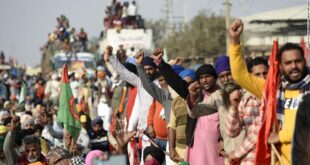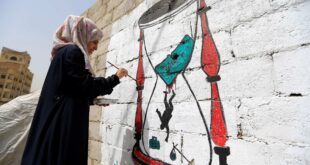by SAYANDEB CHOWDHURY
→IT
 Last summer I found myself at the annual Critical Theory Summer School at Birkbeck College, University of London. The primary attention and energy of the lectures and discussions at the summer school was to find a lexicon for the many modes of resistances that have been sweeping across the world in the last few years. Etienne Balibar, Costas Douzinas, Slavoj Zizek, the big names of the global left academia were there. As we argued in class and outside, the flares at Taksim Square were beamed into the nearest television screens. Square succeeded Occupy Movement, Arab Spring, Egypt. Closer to home, the Shahbag movement in Dhaka, Bangladesh is perhaps a more ready reckoner, for it was a movement, as spontaneous as one could be, of young people from the country’s despondent middle class who conglomerated, for days on end, to resist what looked like the country’s inevitable descent into Islamic extremism[1]. They were resistances of a different kind, the etymology of which was still to be written. None of the thinkers present there had any immediate analysis and neither were they keen to offer one. Some likened it to 1789 – to the storming of the Bastille by the people of France -, some to 1968. But it was more akin to a modern epic, which we knew by heart, but no one had the accompanying text, no one knew who coined the first words and who continued to add to the poem as it leaped from that capital to this plaza, that demography to this democracy, that street to this via or rue. In the last year this has spread to Brazil. In recent days, Hong Kong has witnessed something similar.
Last summer I found myself at the annual Critical Theory Summer School at Birkbeck College, University of London. The primary attention and energy of the lectures and discussions at the summer school was to find a lexicon for the many modes of resistances that have been sweeping across the world in the last few years. Etienne Balibar, Costas Douzinas, Slavoj Zizek, the big names of the global left academia were there. As we argued in class and outside, the flares at Taksim Square were beamed into the nearest television screens. Square succeeded Occupy Movement, Arab Spring, Egypt. Closer to home, the Shahbag movement in Dhaka, Bangladesh is perhaps a more ready reckoner, for it was a movement, as spontaneous as one could be, of young people from the country’s despondent middle class who conglomerated, for days on end, to resist what looked like the country’s inevitable descent into Islamic extremism[1]. They were resistances of a different kind, the etymology of which was still to be written. None of the thinkers present there had any immediate analysis and neither were they keen to offer one. Some likened it to 1789 – to the storming of the Bastille by the people of France -, some to 1968. But it was more akin to a modern epic, which we knew by heart, but no one had the accompanying text, no one knew who coined the first words and who continued to add to the poem as it leaped from that capital to this plaza, that demography to this democracy, that street to this via or rue. In the last year this has spread to Brazil. In recent days, Hong Kong has witnessed something similar.
But none of us in our remotest hope had given any scope to see anything similar in India any time soon. The larger Indian demography is fed with a developmental mythology that most young people participate in too readily. An increasingly solipsistic urbanising and aspirational middle class has increasingly, over the last two decades, made its choices clear. It has largely opposed radical legal and social reforms, it has been a hesitant receptor of liberal modernity but was happily boarding the neo-liberal bus with low alacrity and high jingoism. The Left, which provided the only decent alternative to the dominance of political opportunism, had been declining rapidly over the last decade to be upended by several aggressive, provincial and regionalist parties. Each of them is, ethically and politically, as bankrupt as the other. The last two decades have seen the income gap widen, a huge population has been waylaid by the apparent riches of the open market economy, manufacture and agricultural sectors have shrunk and a huge part of the population has been kept outside the growth that the technology and service sector has triggered in the urban and semi-urban territories. If anything, assaults on women, on religious, ethnic and sexual minorities, on the poor and on the country’s indigenous population have only increased. Pockets of resistance are not entirely rare, but given India’s notorious diversity, it looked impossible that any amount of mobilization could take place around one or two pressing issues. Even if it did, they would always be chained to the ministrations of this or that political party.
At the same time, this very diversity has ensured that in spite of a lack of any genuine and overarching social mobilization, there are only a few things than one can generalize as decisively «Indian» in scope and character. If in one part of the country, the sweep of the rightist forces were total and unstoppable, at the same time in another part, there could be an equal and opposite wind blowing. Hence, it would be useful to understand the recent events at Calcutta’s Jadavpur University within this broad and often contradictory scenario. After all, the implications of the movement, to whose details we will presently come, are still at large. But that does not take away the right of the movement to be considered as exceptional and provocative, even if it may not have seen a desirable conclusion.
But before we go into the movement, we need to look at Bengal closely, to whose restive political condition the movement marks itself against. The regional outfit Trinamool Congress Party (TMC), which managed to overthrow a communist-led government after thirty-four years in 2011, has exposed itself as a party of the mafiosi and Lumpen, who, led by a belligerent street-fighter whose ignorance in all matters of governance is only matched by her megalomaniac self-love, have perforated all democratic organizations, institutions of higher learning, human rights bodies and women’s commissions, the judiciary, the legal framework, the state finances. In whichever way one looks, this regional State is out of joint, as failed a State as one can be within a federal architecture. The Left, which in its many years in power, had installed a kind of overpowering political mandate on every institution of the State and in a way paved for the current imbroglio, has been decimated. However, the current party, which came to power on a huge mandate of anti-Left sentiment that was triggered by wanton acts of violence and forcible land acquisition, has proved to be much worse. Public discontent with the current disposition is high, whether or not it shows itself in the mandate two years from now. Devoid of economic and employment opportunities and marginalized by the coup of the corrupt and the brash, the middle class has its back against the wall. In brief, hence, Bengal/Calcutta is in perpetual in-betweeness: it is neither a structured neo-liberal space (like many other parts of India), nor it is a socialist welfare state. It is stuck in an indefinite un-becoming, gratuitously short of economic opportunities and mechanism for well-being while also conscious of a lack of political language to articulate its precariousness. It was within this context that the Jadavpur University students launched a movement that has been globally hash-tagged as Hokkolorob, which broadly translates into the cry: Let There be Clamour.
The purported beginning of the movement was the demand for a fair enquiry into a case of sexual harassment of a female student during a university event on August 28th. The university administration was not keen to reopen the case, after an impetuously convened enquiry committee submitted a half-baked report which carried clear hints that the administration was trying to protect political interests. The students who have in the past demanded the lessening of punishments for errands like ragging and absenteeism, were now, for the first time in near memory, demanding justice for the girl and punishment for the culprits which can be only achieved through an independent enquiry committee. The sit-in was largely peaceful and did not disrupt classes or the day-to-day proceedings of the university.
But the VC [Vice-Chancellor, ndr], who has been lately at odds with the university community’s broader goals of academic freedom and had been accused of playing the dirty tricks to satisfy his political masters, panicked on the night of 16th September and called in the police, by all consensus a last resort to tackle on-campus student-unrest. The police interference by all means still remains, from all video and eye-witness accounts, largely unprovoked by the students. The VC not only got himself out but also sent back the police to round up, rough up and then brutally punish the students. He did so with some help from acolytes within the administration who at 2 pm at night aided the raging police forces by switching off the lights of the administrative building so that the police could rough up students, assembled under the porch of the building, with adequate impunity.
By next day the word was out. For two days, the city remained restive, tensed and undecided. But by the afternoon of September 20th, when thousands descended in downtown Calcutta for a protest rally which no one really had «organised», it was clear that a substantive part of the city had assembled spontaneously, having come to see the incident at JU as the spark that had forced open the long-capped disgust one had been nurturing for this government.
One report in the Leftist web-journal Kafila has described the rally in this way: «finally on September 20th, the numbers on the rally swelled a further five-fold in what was the grandest united show of strength by the youth. Students marched in inclement weather and pouring rain from Nandan to Rajbhavan as an estimated fifty colleges across Kolkata and neighboring districts took part. A memorandum of demands was submitted to the Governor, who is also the Chancellor of the University».
It was an outpouring of unbelievable intensity and those of us who were present in the rally were constantly reminded of being part of history. A generation whose political consciousness was doubtful and whose capacity to mobilize numbers was beyond imagination had done so with effortless spontaneity. Women were at the forefront of the rally, managing the crowd and the traffic, sloganeering, running up and down to keep the spirits high. And it was not the city’s urbanized, well-heeled middle class youth only who had conglomerated. Thousands came from the margins, from distant colleges where the political consequences of dissent against the ruling government were measurable and immediately pounced upon.
The brazenness of the rally and its peaceful management had attracted global attention and by next day the local media had taken sides. The teachers expressed solidarity with the students and had marched along. Class boycott followed and the demands for the interim VC’s resignation had only shrilled and sharpened-across the city, the social media and the campuses around the state and the country.
 As the university went for its yearly autumnal break on October 30th, the movement was still raging and had spread wildly through social media. There were further meetings, sit-ins by senior faculty and citizens’ congress in the campus. The education ministry, which had been blatantly supporting the VC’s interest, had in the meantime set up another controversial committee which submitted its report and indicted two students of sexual assault, a report which remains as suspect as the first. The interim-VC was still hanging on. Five highly respected emeritus professors, on the last day of class before vacations, met the University’s Chancellor, the Governor of the state, to look into the matter of the interim VC’s appointment as a regular one after October 28, when the current term expires. After the holidays, the VC, contrary to both public sentiment and expectation, was handed a full-term, signifying clearly that the state government, which funds the university, was in no mood to indulge in student opinion. This decision came in spite of the fact that the government was beleaguered by growing financial scam, which was followed by discovery of some of its second-rung leaders having links with terrorist organizations operating out of Bengal to disband the government in neighboring Bangladesh!
As the university went for its yearly autumnal break on October 30th, the movement was still raging and had spread wildly through social media. There were further meetings, sit-ins by senior faculty and citizens’ congress in the campus. The education ministry, which had been blatantly supporting the VC’s interest, had in the meantime set up another controversial committee which submitted its report and indicted two students of sexual assault, a report which remains as suspect as the first. The interim-VC was still hanging on. Five highly respected emeritus professors, on the last day of class before vacations, met the University’s Chancellor, the Governor of the state, to look into the matter of the interim VC’s appointment as a regular one after October 28, when the current term expires. After the holidays, the VC, contrary to both public sentiment and expectation, was handed a full-term, signifying clearly that the state government, which funds the university, was in no mood to indulge in student opinion. This decision came in spite of the fact that the government was beleaguered by growing financial scam, which was followed by discovery of some of its second-rung leaders having links with terrorist organizations operating out of Bengal to disband the government in neighboring Bangladesh!
Since then, the university’s faculty and staff have organized a mass convention to address its problems against the VC, students have marched again on October 20th to mark a month of the street protest, have publicized their grievances and pamphleted their disgust. All in a peaceful, democratic way. But the VC has clung to his post, further allegations of administrative wrongdoing and academic plagiarism against him notwithstanding. Finally, on the last two days of October, the students of the Humanities faculty of the university organized a plebiscite on the VC. They received a whopping 98 percent voting in favor of his resignation. The plebiscite of the Science and Engineering faculty is to be held next week. But any change seems very unlikely.
It’s too early to critically evaluate the movement in terms of its greater goals, the nature of its solidarity, its class and gender equations. We can’t even say with cheerful certainty that on September 20th, Calcutta joined the global roaster of protests. But we can surely observe that this was one of the first student protests which was speaking a new language, because it was change inducing, anti-status-quoist, un-bannered and a-political. To that end, Hokkolorob has made the clamour it had to. The Calcutta rally could well remain just a day of autumnal spring on the streets of Calcutta. Or it might well go down in history as the day that marked a decisive move away from the politics of apathy, graft, opportunism and arrogance (of any and every «political party») towards a politics of hope, resistance and spontaneity. If nothing at all, it will be remembered as one in which, in a historically difficult time, the young of the city provided a possibility of articulation. If nothing else, this could be the most important lesson from the events of the last two months!
[1] The movement, not always a kindred one, bayed for the harshest punishment to those who sided with Pakistan’s military establishment and opposed Bangladesh’s War of Independence in 1971. Four decades later, that fringe group had become a prominent public presence and was increasingly been seen as the force behind Bangladesh’s gradual but irrevocable path towards an extreme Islamic sensibility. The Shahbag movement brought out the public ire against the government’s inability to «deal» with them legally and eventually forced the courts to hand out the strictest punishments to those found guilty of trying to undermine the country’s democratic principles and channelize its sentiments towards a radical Islamic state.
 ∫connessioniprecarie connettere gli ∫connessi, produrre comunicazione
∫connessioniprecarie connettere gli ∫connessi, produrre comunicazione



